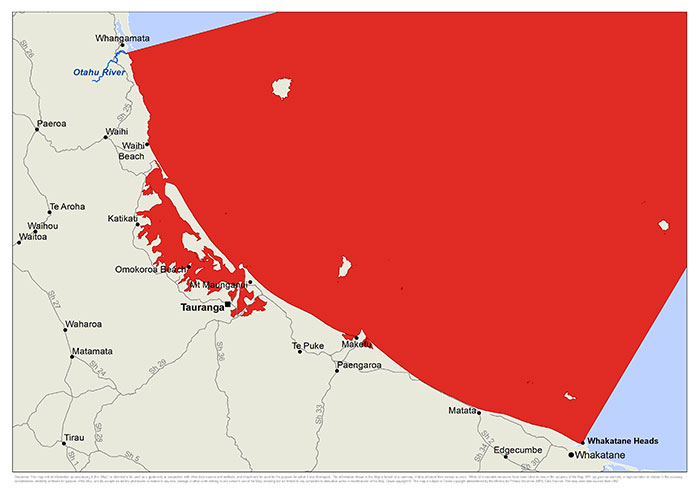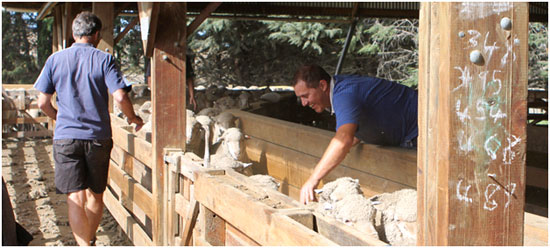The aim
![Hands holding wool]() Shaping market demands for New Zealand fine wool.
Shaping market demands for New Zealand fine wool. ![wool and yarn]() Meeting market demands for fine wool.
Meeting market demands for fine wool.The New Zealand Sheep Industry Transformation Project (NZSTX) aims to increase production of market-driven sheep, shifting the balance between New Zealand strong and fine wool production, and using product differentiation to generate better grower returns for sheep fibre, meat and other products.products, such as leather.
The challenge
Over recent decades, profitability in the sheep meat and strong wool sectors has suffered long-term decline, resulting in a large drop in the national sheep flock in favour of dairy and other production. At the same time, prices for fine wool fibre (such as Merino) have remained higher and demand from international markets for certain fine wool types has begun to outstrip New Zealand supply (for example, in the active outdoors apparel market).
While additional premiums for New Zealand fine wool growers have been achieved through successful product differentiation, this success has not been replicated in other parts of the New Zealand sheep industry with strong woolindustry. Products such as leather and lanolin have rarely been regarded as potential sources of profit for growers, and sheep meat typically beingand strong wool has been sold on a commodity basis.
The solution
The New Zealand Merino Company (NZM)NZM model, which forms the foundation of the NZSTX programme, takes a fit-for-market approach. The end-market user is identified, and connections are made right through the value chain back to the grower that produced the raw fibre (or meat).meat or leather). This connection between the grower and the market encourages truly fit-for-market production, with clear specifications to be met, providing the opportunity for premiums to be generated throughout the supply chain.
To address the growing demand for New Zealand fine wool fibre in specific markets, such as the active outdoors apparel market,apparel, and steadily shrinking demand for strong wool, a key objective for NZSTX is to shift production towards a more fit-for-market fibre type, In addition, these fit-for-market sheep will produce meat and other products (such as leather) that isare being differentiated through NZSTX initiatives to achieve greater value for growers and the value chain.
Underpinning this shift in production to better meet market demands is the portfolio of NZSTX production science projects. The 3three key areas are genetics, animal health and forage production. A majorThe focus forin the remainder of the NZSTX programmeupcoming year is on the FeetFirst project, which spans both genetics and animal health, and is seeking a new genetic solution to footrot in sheep.
Find out more
Find out more about the NZSTX production science programme
![Two men inspecting ewes in sheep yards at the Canterbury central progeny test site]() Dr Mark Ferguson (NZM's Production Science Project Manager) inspects ewes at the Central Progeny Test site in North Canterbury. The Central Progeny Test is an anchor project in NZSTX's genetics and animal health portfolio.
Dr Mark Ferguson (NZM's Production Science Project Manager) inspects ewes at the Central Progeny Test site in North Canterbury. The Central Progeny Test is an anchor project in NZSTX's genetics and animal health portfolio. ![Two men inspecting ewes in sheep yards at the Canterbury central progeny test site]() Dr Mark Ferguson (NZM's Production Science Project Manager) inspects ewes at the Central Progeny Test site in North Canterbury. The Central Progeny Test is an anchor project in NZSTX's genetics and animal health portfolio.
Dr Mark Ferguson (NZM's Production Science Project Manager) inspects ewes at the Central Progeny Test site in North Canterbury. The Central Progeny Test is an anchor project in NZSTX's genetics and animal health portfolio.Outcome Logic Model
Outcomes to date
- Through NZSTX initiatives, the
The NZM fibre supply contract model has been enhanced, with more direct supply contracts for the New Zealand fine wool clip, often at a significant premium to the global commodity price. Contracts are in place with market partners from around the world, including New Zealand, Europe, the USA, the UK, ChinaChina, Japan, Germany and Japan. Italy for fine and mid micron wool, worth around $86 million per year to fine and mid-micron wool growers in New Zealand. Market conditions for wool fibre are currently challenging, under scoring the importance of the market initiatives in the NZSTX programme to support the premium position for fine and mid micron wool - Differentiation of New Zealand Merino fibre undertaken through NZSTX has enabled the development of new brand partnerships across a range of micron categories, the creation of new business prospects with potential brand partners, as well as continued demand for New Zealand fine wool fibre from established brand partners.
- Through NZSTX, NZM has further developed the suite of tools used to differentiate New Zealand Merino fibre, particularly in the digital communication space. This assists brand partners with market positioning of New Zealand fine wool fibre.
- NZM’s farm accreditation system, which underpins the credibility of traceable and sustainably produced New Zealand Merino fibre, has been enhanced during the life of NZSTX. This accreditation system enables brand partners to meet the increasing consumer demand for these attributes.
- Alongside NZSTX, NZM has begun marketing New Zealand strong wool and has had a number of early successes with new brand partners in this space and significant grower commitment. This work is strongly aligned with the NZSTX strategy for the 2-year extension, as it enables NZM to build relationships with strong wool growers and provides the opportunity to discuss moving towards more fit-for-market production with these growers.
- NZM and Silver Fern Farms (through
Through the Alpine Origin Merino joint venture)venture, NZM and Silver Fern Farms have differentiated Merino meat under(under the 'Silere'SILERE alpine origin merino'brand. This isbrand) and are providing improved pricing certainty for New Zealand sheep growers through longer-term contracts. BrandedThe full year (2013-14) target for overall sales of Merino, both domestically and internationally, are continuing to grow.has been met, with international sales exceeding expected volumes. - In collaboration with New Zealand Light Leathers, NZM prototyped Merino leather in the high-end fashion market (as 'Kura
'KURA New Zealand Alpine Leather'). While this concept showed promise, it is not a commercially scalable prospect at present. Leather' was launched in domestic and international markets in 2013. - The
A production science programme, which will continue until June 2017, focusesincluding a comprehensive technology transfer component, commenced in 2010, with a focus on genetics, animal health, forage and technology transfer. - So far, the FeetFirst project has delivered a prototype genomic breeding value (gBV) for footrot resistance in fine wool sheep. This gBV will be further refined (including prototyping of the commercialisation pathway) during years 6 and 7 of the NZSTX programme.
- A fine wool central progeny test (CPT) has
on-farm trials. As part of the production science programme, the following key projects have been established forinitiated to accelerate the transition of New ZealandZealand’s sheep industry, which is enabling estimated breeding values (EBVs)industry to be generated across the New Zealand fine wool sheep flock. The CPT is also playing an important role in the development of the gBV for footrot resistance.fit-for-market production:
The FeetFirst project was commenced in 2012 to develop a new genetic test for selecting foot rot-resistant fine wool sheep. There has been encouraging progress in this work.In 2013, a central progeny test was established for fine wool sheep, along with a stud breeder support service, to accelerate the transition of New Zealand's fine wool industry to estimated breeding values (EBVs). To date, there has been uptake of by approximately 20 fine wool ram breeders (representing around 75% of fine wool rams sold in New Zealand) of the tools required to generate EBVs.A grower-owned nucleus breeding flock was formed in 2013 to accelerate the development of fit-for-market fine wool sheep genotypes. This project is progressing well and will be commercialised by the industry at the end of the PGP programme to ensure rapid dissemination of these genetics within the New Zealand sheep industry.Forage trials have identified legume options for increasing fine wool sheep production in difficult high-country farming areas, and an extension programme is leading to increased uptake of these forage types in fine wool production systems.
- There has been a significant uptake of EBV technology amongst New Zealand fine wool stud breeders as a result of NZSTX, with increasing awareness of the technology (and demand) from commercial breeders.
- A nucleus breeding flock has been established to develop
In March 2014, an improved fine wool sheep genotype (including improved carcass, reproduction and animal health attributes), with a groupexternal mid-term progress review of 7 breeders committing to continue the nucleus flock asNZSTX project (see link below) found that NZSTX is a commercial entity. - A study into the impact of Ovine Johne’s disease, undertaken in collaboration with the Johne’s disease research consortium (JDRC) has delivered improved understanding of the economic proposition for vaccinating fine wool sheep against the disease.
- Software
worthwhile programme that has been developed for modelling production system comparisons between different sheep genotypes (for example fine wool versus strong-wool). This software programme is used in consultations with sheep producers consideringpotential to substantially transform the transition from strong wool to more 'fit-for-market' sheep production systems. - Trial work done by Lincoln University has increased knowledge of how alternative legumes can be established
industry and managedimprove economic outcomes in sheep production systems in challenging high country environments. Through a dedicated agronomist service supported by NZSTX, there has been accelerated forage development amongst New Zealand’s fine wool sheep producers – particularly using legumes such as lucerne.the sector.
Audit
Key facts
Programme start : September 2010
Length : 7 years. (A 2-year programme extension ending in June 2017 has been approved)
PGP funding : $16.8 million
Industry funding : $16.8 million
Crown funding paid out to programme for work done to 31 December 2015:January 2016: $15.02 million $14,634,834.94
Commercial partners : The New Zealand Merino Company Ltd
Estimated potential economic benefits to NZ: MPI is confident that this PGP programme will generate conservatively $250 million a year in economic benefits by 2025. Potentially the gain could be much higher if this programme is successful in its objective of transforming the sheep industry.
Mid-term progress review report
New Zealand sheep industry transformation PGP programme (March 2014)New Zealand sheep industry transformation PGP programme (March 2014)
 Map showing the areas covered by the shellfish biotoxin alert in and around Tauranga and the Coromandel.
Map showing the areas covered by the shellfish biotoxin alert in and around Tauranga and the Coromandel.  Shaping market demands for New Zealand fine wool.
Shaping market demands for New Zealand fine wool.  Meeting market demands for fine wool.
Meeting market demands for fine wool. Dr Mark Ferguson (NZM's Production Science Project Manager) inspects ewes at the Central Progeny Test site in North Canterbury. The Central Progeny Test is an anchor project in NZSTX's genetics and animal health portfolio.
Dr Mark Ferguson (NZM's Production Science Project Manager) inspects ewes at the Central Progeny Test site in North Canterbury. The Central Progeny Test is an anchor project in NZSTX's genetics and animal health portfolio.  Developing new, innovative meat products
Developing new, innovative meat products









